So, Asparagus and Hollandaise, a classic combination. Now, when I say healthy hollandaise sauce, I mean a healthier alternative. Hollandaise will never be completely healthy because a lot of fat is required. The same goes for other emulsification sauces. What makes this hollandaise sauce healthier you ask? Well, I used vegetable oil instead of clarified butter, and it worked out really nicely!! Not only does this make the hollandaise healthier, it makes the process quick and easy. Since you don’t have to go through the process of clarifying butter. Not to say that clarifying butter is really tough and stressful, but simply just using an oil instead will save you time.
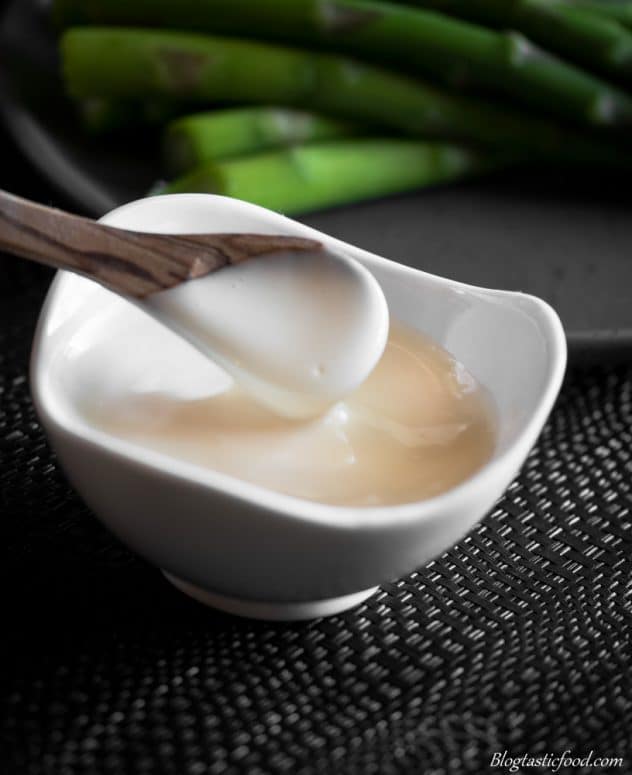
If you want to take the extra time to clarify your butter then that is totally fine. It’s just the clear fat that is separated from the milk solids. All you have to do is melt your butter in a microwave for a couple of minutes in a bowl or large measuring jug. Once melted, wait for all the milk solids to sink to the bottom. Use a spoon to skim of the foamy top, ladle out all the clear fat then, you just discard the milk solids and BOOM! You have clarified butter. And that is what’s classically used for hollandaise sauce.
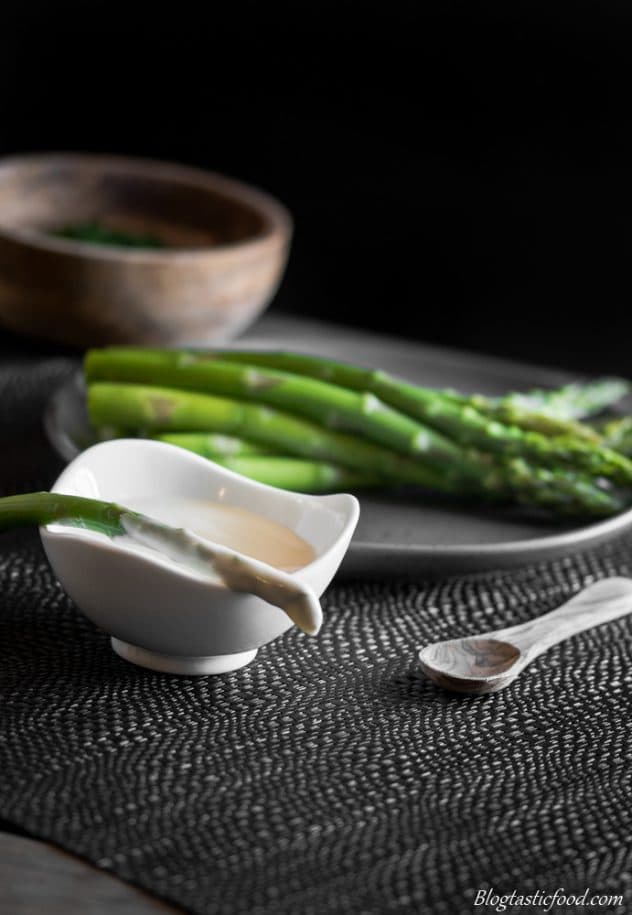
I had to test this recipe three times before I was satisfied. The reason I had trouble was because the sauce always ended up being too thin. And the solution was actually very simple. I didn’t spend enough time with the aeration process. I know what you are thinking, “WTF does that mean!?”. Well, you start a hollandaise sauce by whisking acid and egg yolks over simmering water. This cooks the eggs, and you’ll notice that the egg yolk mixture will go pale, thick and foamy as you keep whisking. And that is the aeration process, which will then allow you to start SLOWLY whisking in whatever fat you decide to use.
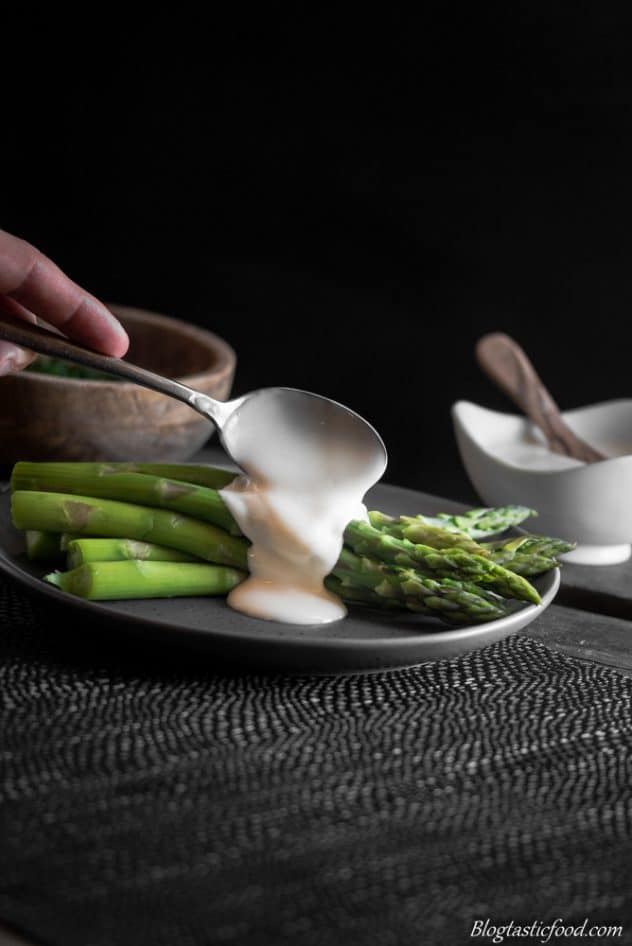
However, after 1-2 minutes of whisking the eggs and vinegar, I thought “oh, it’s already thick and foamy, guess it’s time to put my oil in”. Please do not make that same mistake, because it needs more time. The key is to give the aeration process a good 5-10 minutes until it’s really nice and thick and almost tripled in volume. Then you can add as much fat as you want. It’s also important to be mindful of the temperature, making sure the egg mixture isn’t getting too hot. Heat control is always very important with eggs since they are so delicate. If you focus on those 2 things, hollandaise sauce should be a no-brainer.
As always, thank you so much for following! Subscribe if you want to stay updated with new recipes. I am going to start doing Instagram stories as soon as my new phone arrives in the mail. Something I should have started long ago to be honest, but I have been hustling hard on my Instagram account lately so if you want to check that out, please do so. Other than that have an amazing day. I will be posting a green pasta recipe for Saint Patrick’s Day this Sunday.
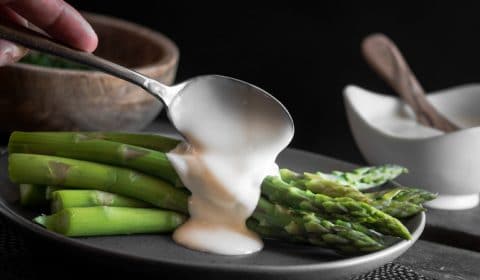
Blanched Asparagus with Light, Healthy Hollandaise Sauce Recipe
Put this hollandaise sauce and asparagus combo with toasted brioche soldiers, a poached egg, sauteed buttery mushroom......whatever you want!
Ingredients
- 500 g Asparagus woody ends snapped off
- 1-2 handfuls of ice leave in the freezer until ready to use
- Salt
- Parsley chopped for garnish
Hollandaise sauce:
- 1 egg yolk
- 1/2 a tablespoon of red wine vinegar
- 1/2 a tablespoon of water
- 1 cup of vegetable oil have it ready in a jug so it's easy to pour
- A squeeze of lemon juice
- Salt and pepper for seasoning
Instructions
-
Have a pot of salted boiling water ready for your asparagus
-
Hollandaise sauce:
-
Fill about ¼ of a small sauce pot with water and bring to a very gentle simmer.
-
Put your egg yolk, red wine vinegar and water together in a large, heatproof bowl.
-
Whisk together, then put the bowl over the simmering water making sure that the bottom of the bowl doesn't touch to water. From there, keep whisking the egg yolk mixture, taking it off the heat briefly every minute so that the eggs don't get to hot and start to curdle.
-
After about 5-10 minutes (5 minutes at least), the eggs should have frothed up, and become pale and thick.
-
From there, take the bowl off the heat, then very slowly add the vegetable oil while continuously whisking. Be sure to not add the oil too fast.
-
Once all of the oil is added and whisked through, I like to add another 1/2 tablespoon of water to thin it out a bit. Then, season to taste with salt, pepper and your lemon juice.
-
Blanched asparagus:
-
Put your ice in a large bowl and fill with water.
-
Add the asparagus to your pot of salted boiling water and blanch for about 2½ minutes. I like them to be cooked through but still have a bit of crunch.
-
Remove with a pair of tongs then transfer to the ice water. Leave for about 30 seconds.
-
I like to transfer the asparagus on to kitchen paper just to drain for half a minute.
-
Assembly:
-
Place the asparagus on your serving plates.
-
Spoon the sauce over your asparagus.
-
Top with your parsley then serve with whatever you like. Toast, eggs, bacon etc.
Recipe Video
Recipe Notes
- If you make this sauce with vegetable oil, it will hold quite nicely in the fridge. However, if you want to reheat it to serve it warm again. You can try heating it up over a water bath very gently. You may want to have a bit of water or acid (such as lemon juice or vinegar) with you in case is starts to separate.

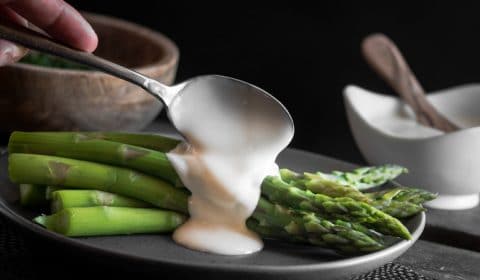
Leave a Reply